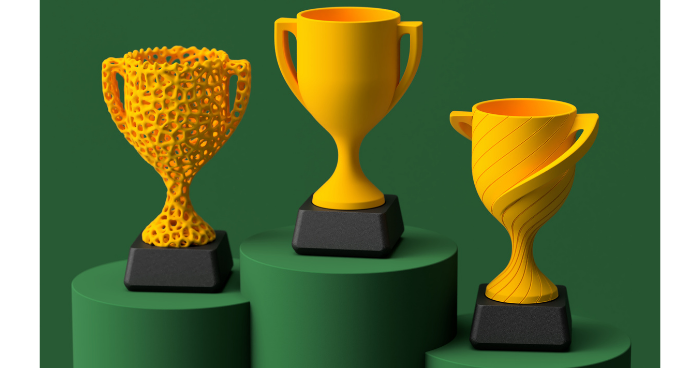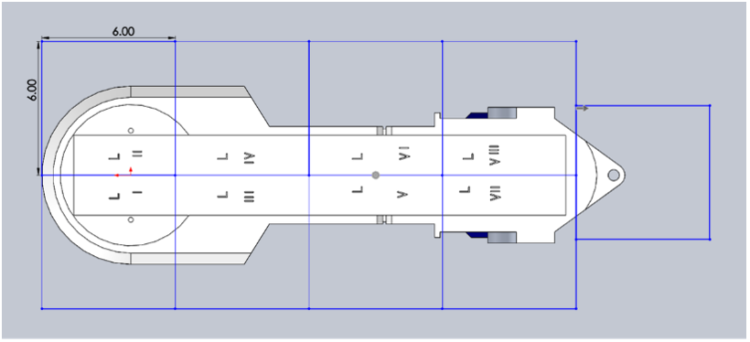How to design for 3d printing optimize your 3d models?
Are you interested in 3D printing but not sure how to design for it? Creating a 3D printable model requires a different approach than traditional 2D design. But don’t worry, with a few tips and tricks, you can optimize your designs for 3D printing.
3D printing has revolutionized the way we design and manufacture products. It allows us to create complex shapes and structures that were once impossible to make. However, not all designs are suitable for 3D printing. Poorly designed models can result in failed prints or low-quality products.
If you’re new to 3D printing, or if you’ve been struggling to create models that print correctly, this article is for you. In this guide, we’ll explore the key considerations you need to make when designing for 3D printing. From choosing the right software to optimizing your designs for printing, we’ll provide you with the knowledge and tools you need to create high-quality, printable 3D models. So, let’s dive in and learn how to design for 3D printing!
To ensure your 3D prints are successful and of high quality, it’s important to design with 3D printing in mind. In this article, we’ll go over some essential tips for designing for 3D printing, including how to optimize your models for printing and common mistakes to avoid. Whether you’re a beginner or an experienced designer, these tips will help you create great 3D printable models.
How to design for 3D printing?
When 3D printing, it’s important to follow the instructions for your specific printer. Different printers have different requirements for file types and print settings, so make sure you choose the right one for your model. Additionally, it’s wise to familiarize yourself with the basic rules of 3D printing before starting a project.

Choose the right software. When working on a 3D printable model, it’s important to choose the right software for the job. This will depend on your skill level and the complexity of the project. Popular 3D modeling software includes Autodesk Meshmixer, Blender, and Fusion 360.
Optimize your design for printing. To ensure a successful print and high-quality results, it’s important to optimize your design for 3D printing. This means making sure your model is the right size, has a suitable wall thickness and infill pattern, and that the structural integrity of the model is strong enough to support itself during printing.
Avoid common mistakes. When designing for 3D printing, there are certain mistakes you should avoid. These include using too thin walls, using unsupported overhangs, creating small details that won’t print correctly, and making the model too complex.
By following these tips and being mindful of 3D printing limitations, you can create great 3D printable models. With the right knowledge and tools, you can optimize your designs for 3D printing and produce high-quality prints every time.
The principles in action
Now that you know the basics of 3D printing design, let’s look at some examples. By following the principles outlined in this article, you can create models that are optimized for 3D printing and will produce reliable results. For example:
1) Choosing the right software: If you’re creating a detailed model with complex shapes and structures, it’s best to use a professional program such as Autodesk Meshmixer.
2) Optimizing your design: To get the best results when 3D printing, make sure you adjust the size and wall thickness of your model to fit within the specifications of your printer. Additionally, consider using a honeycomb or triangle infill pattern to increase the strength of the model.
3) Avoiding common mistakes: Make sure you don’t make your models too small or too complex, as these can cause problems during printing. Additionally, be aware of unsupported overhangs and angles that are too steep, as these are prone to failure.
By following the principles outlined in this article, you can create great 3D printable models and produce high-quality results every time. Good luck!
The right modeling mindset
Designing for 3D printing isn’t just about following the rules – it’s also about having the right mindset. When working on a project, it’s important to keep in mind that 3D printing is an additive process, which means you need to think about how each layer of material will fit together and create a successful print.
Additionally, it’s important to use your creativity and find creative solutions to the various challenges that come with 3D printing. With the right mindset, you can create great designs and achieve excellent results.
As with any project, it’s important to follow the instructions for your 3D printer. This includes using the right file type and resolution, setting the correct print parameters, and ensuring that all of the necessary support structures are in place. Not following instructions can lead to a failed print or poor quality results.
Create test models. If you’re unsure how a model will turn out when printed, it’s a good idea to create a test model first. This will enable you to make adjustments and check the results before committing to a full print.
By having the right mindset and a willingness to experiment, you can create models that are optimized for 3D printing and produce great results.
Printer setup
Before you start designing for 3D printing, it’s important to set up your printer correctly. This includes checking the printer’s nozzle size, ensuring that the bed is level, and calibrating the extruder for optimal performance. It also means making sure that all of the necessary filaments and supports are in place.
By following these steps and being mindful of your printer’s specifications, you can ensure that you get the best results when 3D printing.
What is 3D printing?
3D printing is an additive manufacturing process that uses computer-aided design (CAD) software to create three-dimensional objects from a digital file. The process generally involves laying down successive layers of material until the desired shape is achieved. It’s used for a variety of applications, such as prototyping and producing parts for machines or consumer products.
When designing for 3D printing, it’s important to follow the instructions from your printer. This includes making sure that you use the correct file type and resolution, setting the correct print parameters, and ensuring that all of the necessary support structures are in place. Not following these instructions can lead to a failed or unsatisfactory print.
How to design for 3D printing?
Designing for 3D printing isn’t just about following the rules – it’s also about having the right mindset.

When working on a project, it’s important to keep in mind that 3D printing is an additive process, which means you need to think about how each layer of material will fit together and create a successful print. Additionally, it’s important to use your creativity and find creative solutions to the various challenges that come with 3D printing.
When designing for 3D printing, it’s important to keep a few key principles in mind:
1) Simplicity: Simple models are easier to print and often produce better results. Avoid adding unnecessary features or details that could make the model too complex.
2) Support structures : If a model is too complex to print without support structures, make sure that you add them in the right places.
3) Resolution: Higher resolution models will produce better results, so it’s important to make sure that your models are designed with the correct resolution and file type.
4) Thickness: Thin walls can be difficult to print – aim for a minimum wall thickness of at least 1mm.
5) Orientation: The orientation of the model will affect its printability and quality, so it’s important to think about how you can orient your model to get the best results.
By following these tips and keeping in mind the principles outlined above, you can create 3D models that are optimized for 3D printing and produce great results.